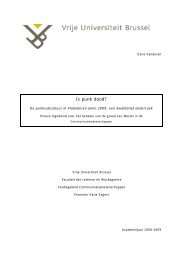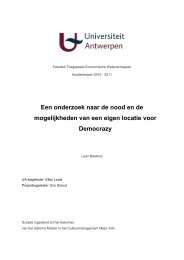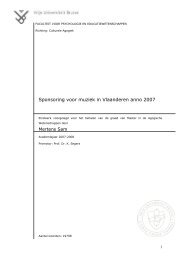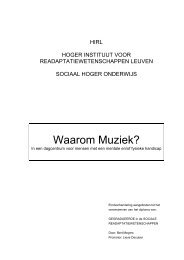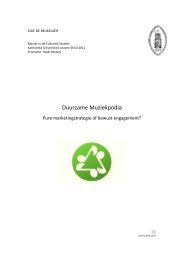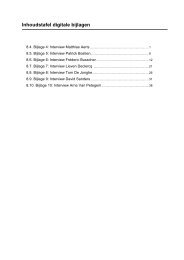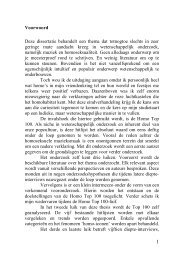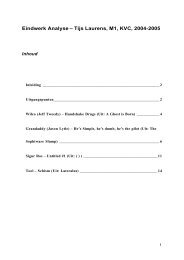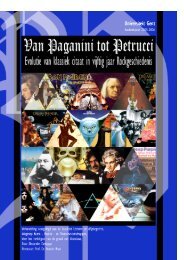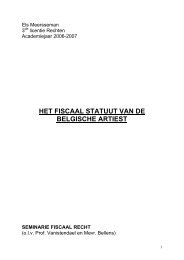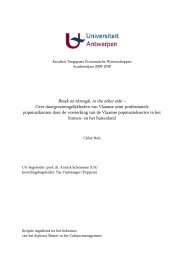Hip hop identity in a township reality. - Poppunt
Hip hop identity in a township reality. - Poppunt
Hip hop identity in a township reality. - Poppunt
Create successful ePaper yourself
Turn your PDF publications into a flip-book with our unique Google optimized e-Paper software.
apartheid state imposed before 1990 and how these constra<strong>in</strong>ed the development of<br />
youth cultures.<br />
“(…) and it was much harder for youth to plug <strong>in</strong>to the global youth scene<br />
and the commodities of youth culture were much harder to procure. You<br />
had to go to great lengths to get hold of hip-<strong>hop</strong> tapes and videos, as well as<br />
the other commodities that are so important to develop<strong>in</strong>g youth identities<br />
such as clothes and drugs.” (Badsha: 136)<br />
As already mentioned, rap music was not played on South African radio stations, so<br />
one had to be reasonably determ<strong>in</strong>ed to get access to hip <strong>hop</strong> material because this<br />
was not readily available. In an <strong>in</strong>terview with Patrick Neate, Ready D recalls:<br />
“We used to get music from pen friends and family who’d been forced to move<br />
out of South Africa. They’d send tapes, letters and magaz<strong>in</strong>es because you<br />
couldn’t get the music here. If hip <strong>hop</strong> did come <strong>in</strong> it would only be one or<br />
two copies and we’d fight over them. One copy would circulate through the<br />
whole of the Cape Flats. If one crew got a tape from an aunt or cous<strong>in</strong><br />
somewhere else <strong>in</strong> the world, that tape or a copy of that tape or a copy of a<br />
copy of that tape would circulate even if you had to press your ear to the<br />
speaker to hear what was left of the music beneath the crackl<strong>in</strong>g.” (Ready<br />
cited <strong>in</strong> Neate: 131)<br />
Although hip <strong>hop</strong> was not readily available for these youths, Neate states it was still<br />
a relatively accessible cultural form, because of the relative economic and political<br />
privileges of the coloured community, at least compared to those of the black<br />
community. They had to make copies of copies, but did manage to get orig<strong>in</strong>al tapes<br />
via their overseas contacts, which was more than their black counterparts could get<br />
access to (Neate: 136). Eventually, the youths <strong>in</strong> the coloured community could<br />
manage to l<strong>in</strong>k <strong>in</strong>to <strong>in</strong>ternational hip <strong>hop</strong> networks and could lay hands on music<br />
tapes and videos, which were illegally copied and distributed through <strong>in</strong>formal<br />
networks (Badsha: 136), as Ready D expla<strong>in</strong>ed.<br />
Badsha states that it was only after South Africa had opened its borders and<br />
<strong>in</strong>ternational trade sanctions aga<strong>in</strong>st it were lifted, commodities of youth culture <strong>in</strong><br />
general became more accessible to more people (Badsha: 137). This was also true<br />
for hip <strong>hop</strong>. All of our black <strong>in</strong>terviewees were listen<strong>in</strong>g to hip <strong>hop</strong> from the mid<br />
n<strong>in</strong>eties on. We do not wish to conclude from this <strong>in</strong>formation that this is because<br />
they did not have access to hip <strong>hop</strong> music before this time. One reason is that they<br />
are all a lot younger than our coloured <strong>in</strong>terviewees. They were all about twelve to<br />
thirteen years old when they started listen<strong>in</strong>g to hip <strong>hop</strong> <strong>in</strong> the mid n<strong>in</strong>eties. This is<br />
an average age at which a lot of youths’ musical tastes starts to change. In all of the



